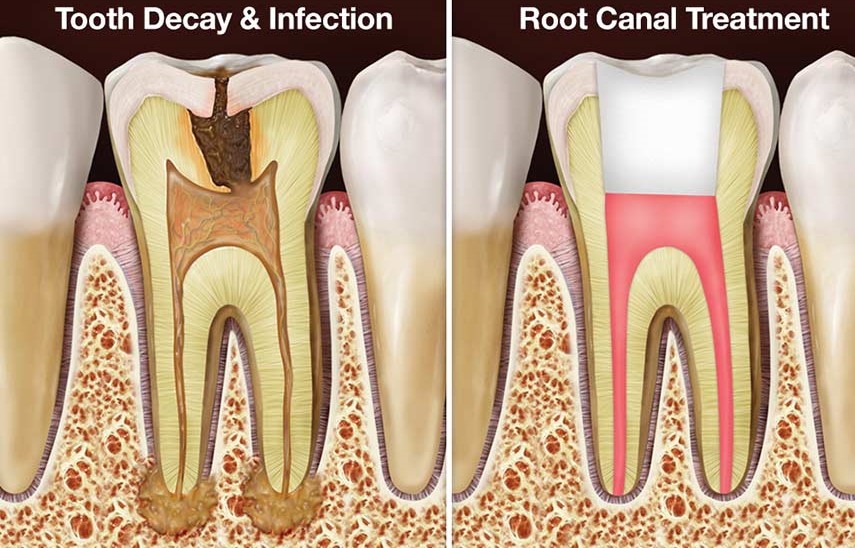What is a Root Canal?
 A “root canal” procedure may be necessary when the soft tissue inside the root canal, known as the pulp, becomes inflamed or infected. This can happen for several reasons, including a chip or injury to the tooth, or deep decay. When a root canal is done, the intention is to save your natural tooth, which is beneficial in many ways. Saving your natural tooth allows you to maintain your ability to bite and chew with your natural tooth, and it is also cosmetically appealing. Saving your natural tooth may be recommended by your dentist (depending on your individual case) to avoid tooth extraction, and/or replacement with a bridge or implant.
A “root canal” procedure may be necessary when the soft tissue inside the root canal, known as the pulp, becomes inflamed or infected. This can happen for several reasons, including a chip or injury to the tooth, or deep decay. When a root canal is done, the intention is to save your natural tooth, which is beneficial in many ways. Saving your natural tooth allows you to maintain your ability to bite and chew with your natural tooth, and it is also cosmetically appealing. Saving your natural tooth may be recommended by your dentist (depending on your individual case) to avoid tooth extraction, and/or replacement with a bridge or implant.
What should I expect during my root canal visit?
A local anesthetic will be given to make sure you are comfortable. A thin barrier will be placed around the tooth, called a rubber dam. This will keep the tooth isolated, clean, and dry during treatment. The treatment consists of three or four basic steps, but the number of visits will depend on your particular case. Some treatments take two visits, but many are just a single visit. Occasionally, three appointments are needed. The number of visits depends on the degree of infection/inflammation, and degree of treatment difficulty of the case. We want to provide you with the best care possible, and for that reason it’s more important to do the very best we can than to meet a specific time criteria.
Here are the basic steps for routine endodontic (root canal) therapy:
Step 1: An opening is made in the surface of the tooth.
Step 2: The pulp is removed from the pulp chamber and root canals. Tiny instruments called files are used to clean the canals and shape them to a form that will ensure they will be well sealed.
Step 3: The root canals are filled and sealed with a material that prevents bacteria from re-entering. Radiographs (x-rays) are taken prior and post-treatment.
Step 4: The opening in the tooth will be filled with either a temporary or permanent filling during your treatment visit, depending on your restoration plan. If multiple visits are required, it is important to return if a “temporary” is placed. A temporary filling can loosen and/or leak which can compromise the root canal treatment, causing it to fail and therefore needing re-treatment. It is important to promptly get the definitive restoration in order to protect your new root canal.
There are, of course, no guarantees. Root canal or endodontic therapy has a very high degree of success, up to 90%. We will discuss the chances of success with you before any endodontic procedure, to help you make an informed decision. If a root canal or endodontic therapy is unsuccessful or fails, you still have options.
